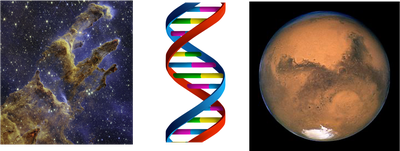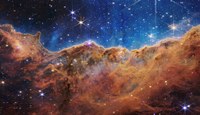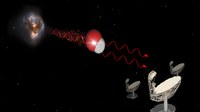PALS - 2022-23
Kentucky’s Oldest Telescope: Born and Bred in Louisville
| When |
Apr 05, 2023
from 07:00 PM to 08:00 PM |
|---|---|
| Where | Monnik Beer Co 1036 E Burnett Ave, Louisville, KY 40217 |
| Contact Name | Lutz Haberzettl |
| Add event to calendar |
|

Speaker: Dr. C.M. Graney, Specola Vaticana
Abstract: In downtown Louisville lies a large brass astronomical telescope in a really stout wooden box. It once belonged to Msgr. Michael Bouchet, pastor at the Cathedral of the Assumption on 5th St. during the late 19thcentury. It was made in Louisville by A. C. Schuman. And now, after over 120 years in storage, it is coming back to life! Yes, it still works. No, it will not be available at this talk (but there will be a lot of pictures).
Astrobiology
| When |
Mar 01, 2023
from 07:00 PM to 08:00 PM |
|---|---|
| Where | Monnik Beer Co 1036 E Burnett Ave, Louisville, KY 40217 |
| Contact Name | Lutz Haberzettl |
| Add event to calendar |
|

Speaker: Gerard Williger, University of Louisville
Abstract: Are we alone? We have been asking this question for millenia. Between planetary probes, powerful telescopes in space and on the ground and studies of "extreme" forms of life on Earth, we have been able to advance the field of astrobiology from philosophical arguments to a rapidly growing scientific endeavor.
Here Comes the Sun
| When |
Feb 01, 2023
from 07:00 PM to 08:00 PM |
|---|---|
| Where | Monnik Beer Co 1036 E Burnett Ave, Louisville, KY 40217 |
| Contact Name | Lutz Haberzettl |
| Add event to calendar |
|

Speaker: Dr. L. Haberzettl, University of Louisville
Abstract: Stars play an important role in the Universe. They are the luminous building blogs of galaxies and one of the major drivers of their evolution. Through feedback mechanisms like Stellar Winds or Nova events, they enrich their surroundings and provide the elements needed for the formation of life in planetary systems like our own Solar System. In this presentation we will look at the formation and evolution of the star in our own Solar System, the Sun. We will explore the Suns interior structure and the processes allowing the Sun to produce energy. We will talk about how solar processes effect life on Earth and give an outlook on the upcoming Total Solar Eclipse, which will be observable from parts of the USA in April 2024.
The Interstellar Medium in the Era of JWST
| When |
Dec 07, 2022
from 07:00 PM to 08:00 PM |
|---|---|
| Where | Monnik Beer Co 1036 E Burnett Ave, Louisville, KY 40217 |
| Contact Name | Lutz Haberzettl |
| Add event to calendar |
|

Speaker: Dr. J.T. Lauroesch, University of Louisville
Abstract: JWST offers new ways to probe the interstellar medium, the gas and dust between the stars out of which new stars and planets form. The various instruments on JWST probe the gas and dust in ways not available to astronomers before now. Beyond pretty pictures, JWST provides a host of information about star formation and the deaths of stars (which return material to the interstellar medium).
The most distant space laser
| When |
Nov 02, 2022
from 07:00 PM to 08:00 PM |
|---|---|
| Contact Name | Lutz Haberzettl |
| Add event to calendar |
|
Speaker: Benne Holwerda, University of Louisville

Abstract: In 2021, we found in the LADUMA (looking at the distant Universe with the MeerKAT Array) survey the telltale signature of Hydroxyl (Oxygen-Hydrogen atom) emitting coherent radio light. The process is known as "masing", similar to how a laser works but occurring naturally and in the radio. Based on suggestions from the public, we nicknamed "Nkalakata" (Big Boss in Zulu). We are now pointing more telescopes at this most distant galaxy to understand how masers could happen naturally and what they tell us about the galaxies they occur in.
Ram Pressure in Astronomy and Engineering
| When |
Sep 07, 2022
from 07:00 PM to 08:00 PM |
|---|---|
| Contact Name | Lutz Haberzettl |
| Add event to calendar |
|
Speaker: Timothy Dowling, University of Louisville
Abstract: Ram pressure, Pr, is the effective pressure of a moving fluid above its thermal or static pressure. In astronomy, it is used to calculate the interaction of stellar winds with planets and to quantify the effects of ram pressure stripping. On airplanes and in wind tunnels, it is measured with a pitot-static tube, an inexpensive device with no moving parts that was invented in 1732. Up through the mid 1960s, across both astronomy and engineering the ram pressure of a moving gas and its momentum flux, ρu2, where and u are the upstream mass density and flow speed, were properly treated as related but distinct quantities. This relationship may be expressed as Pr = Sp ρu2, where Sp is the dimensionless Spreiter number, which ranges between 0:5 and 0:88 for a monatomic gas, depending on the upstream Mach number, Ma. Unfortunately, by the early 1970s, in astronomy ram pressure was defined to be the momentum flux and Sp was fixed to be unity and forgotten as a parameter. In this talk we will review the determination of Sp for subsonic and supersonic flow.
